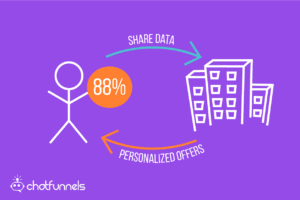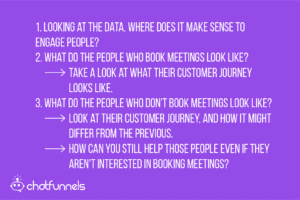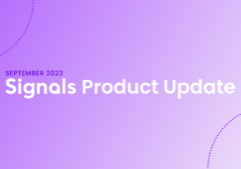CVS Health has removed home delivery charges, in order to reduce person-to-person contact. Gamestop is only allowing a maximum of 10 people in its store with 6 feet between people in checkout lines. Barnes & Noble has removed all furniture and seating and canceled events through April. Grocery Stores everywhere have been reducing hours and creating special times for only seniors to shop.
COVID-19 has altered businesses everywhere. Social distancing has encouraged new hours or even no hours, as business owners then desperately try to move online. Without person-to-person communication, people are bound to feel alone as they struggle to get their questions answered. For companies now relying on websites, its time to step in as online communication becomes more obviously crucial. If you are using a chatbot or live chat- now is the time to up your game. And if you don’t have live chat, now might be the time to hop on-board…
Personalize to Deliver an Experience

In our recent podcast, Billy Bateman goes over some of the most important findings from data produced by Salesforce. It’s especially crucial now, but really any time you are working with customers, to make sure they know they are being considered as people instead of just numbers.
When using a chatbot, personalize your messages- add some humor, people like to laugh even when they’re by themselves- and even consider who you are messaging and gear your information towards them. According to Salesforce Research, “Personalization is a treasured commodity. In fact, 79% of customers are willing to share data in exchange for contextualized engagement, and 88% will do so for personalized offers.” You’re just giving the people what they want!
This is important because what it’s doing is creating an experience for the customer. This experience, just like in a store, is necessary for people to feel safe and heard in online sales. COVID-19 has called for the shutdown of stores deemed “unnecessary” BUT that doesn’t mean you have to give up on customer experience. Consider response time and wording of automated messages and use this time to better your communication virtually, allowing a positive experience for both your clients and your sales team simultaneously!
Data Sources to Understand Customers and Prospects
Experience doesn’t only concern what businesses are giving a customer, it also has to do with what the buyer has ALREADY been through. To gain this information, businesses usually turn to data sources. In 2017, Marketing Organizations were typically using 10 data sources to gain intel on their buyers and potential buyers. In 2019 it was up to an average of 15. (Salesforce 14) The reality is that as more options become available to get new information and fast, the expectation of customer understanding rises.
Once you’ve gathered data, how do you use it most effectively? Here are a couple questions to ask yourself as you start processing more information about your tribe:

The point is, with more data and higher expectations, it is more important to look at the big picture of what your data is showing you. Where are you missing people along their journey? Are there places you could be engaging people and aren’t? Or where they could be reaching out to you? (Bateman)
We recommend taking a day or two a month (or even start it off with COVID-19 quarantine time) to just look at your data and see what’s happening and what you could be doing better. Adjust your tactics to better understand and market to your buyers. This will improve not only personalization efforts but best practice data source usage and understanding journey as well.
Tracking customer satisfaction metrics and customer lifetime value
“Sixty percent of marketers now track customer satisfaction metrics such as net promoter score (NPS), for example, and nearly as many track customer retention rates — recognizing the comparative value of a return customer versus a new lead. Forty-three percent take it a step further by tracking customers’ overall lifetime value. Marketers are also increasingly scrutinizing how they can find their best customers, and how much it costs to do so. For instance, 52% now keep tabs on how much and often they receive referrals from customers, and 51% analyze how much it costs to acquire a given customer. Many marketers are also tracking data that can give a more granular look at how and why specific channels perform, such as the 49% who now track mobile analytics.” (Salesforce 24)

We’ve covered the “before conversational marketing implementation” tactics and dipped our toes into the “during marketing implementation” skills, but this one is in effect only after you’ve started serving buyers. Understanding which of your tactics are going well and which are going terribly wrong is crucial for upward progress. High performers vs underperformers were 1.4 times more likely to be tracking customer satisfaction metrics. Asking “How satisfied were you with this conversation?” turned out to be an extremely valuable way to read the buyer’s mind. Some businesses choose not to track customer satisfaction metrics due to the misconception that it would be an “extra annoyance”. However, data shows that you SHOULD be asking anyways. How else will you need to know where to change things?
Combat COVID-19
This is a scary time for a lot of businesses, but don’t lose hope yet. Upgrade your chatbot usage to combat COVID-19 and do these three things and help keep your business on top of its game!
READ MORE
Start seeing your Buyers' signals
Signals is helping companies automate, grow, and close sales pipeline with industry-leading predictive intent scoring, lead generation, and real-time engagement.






















